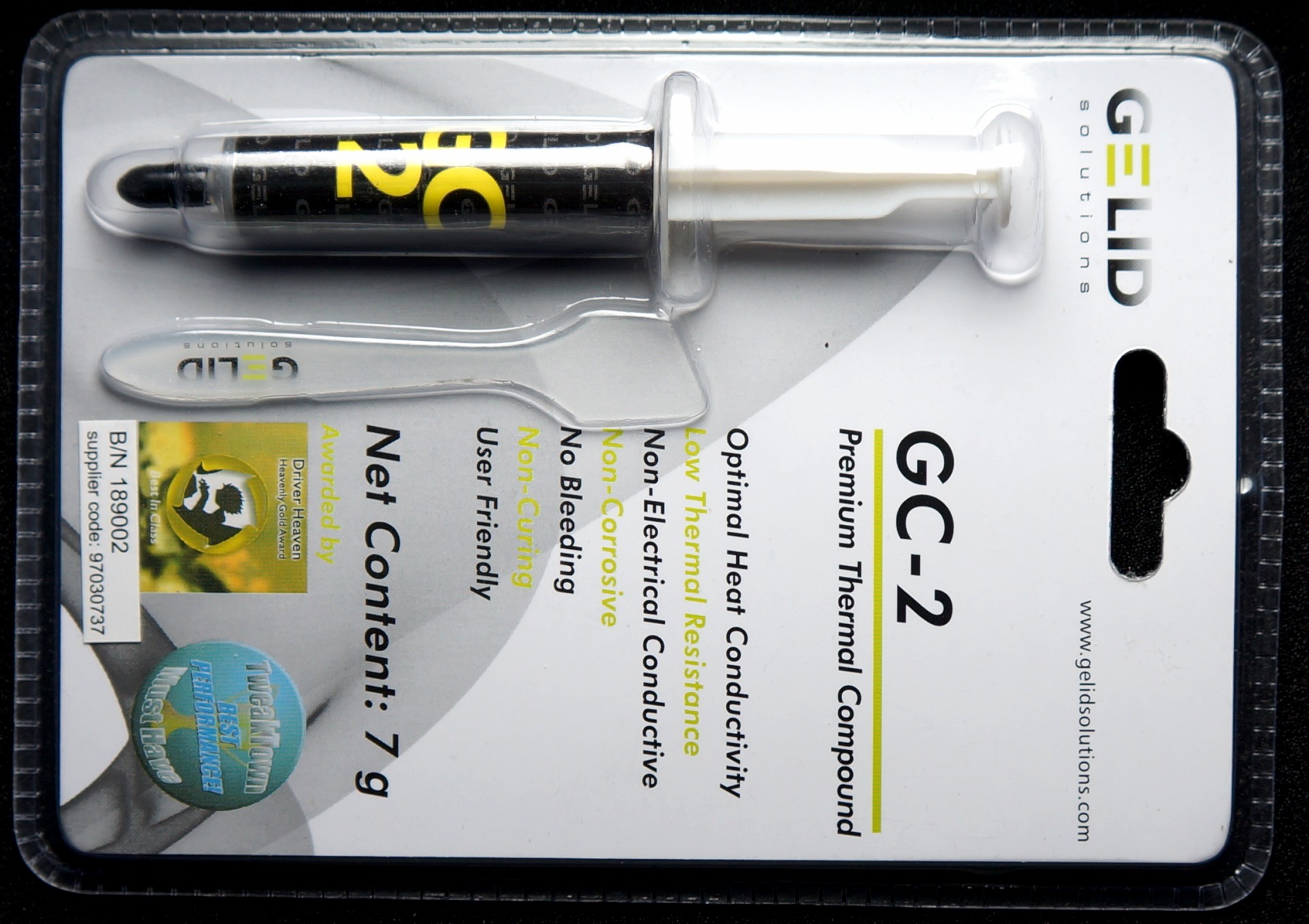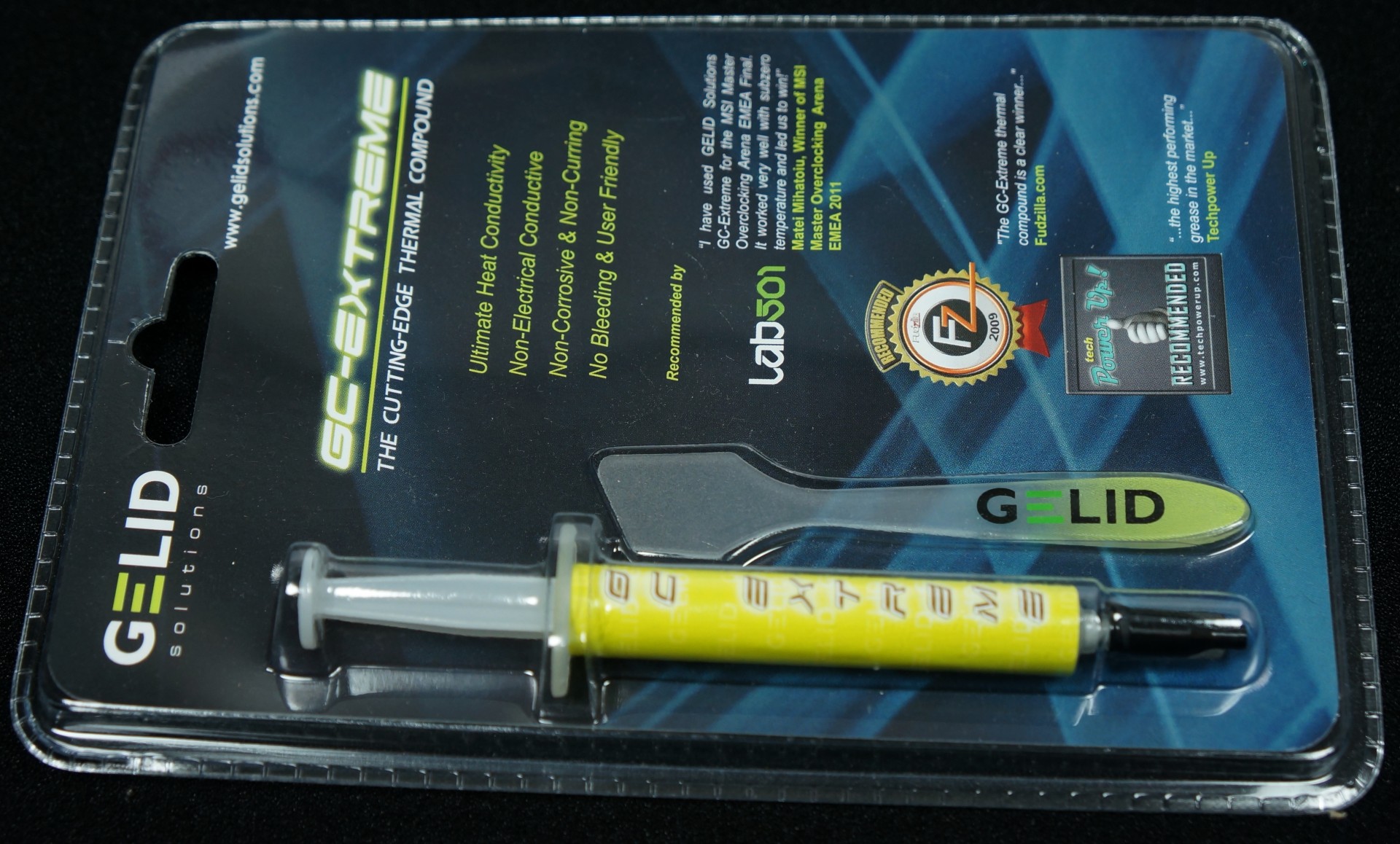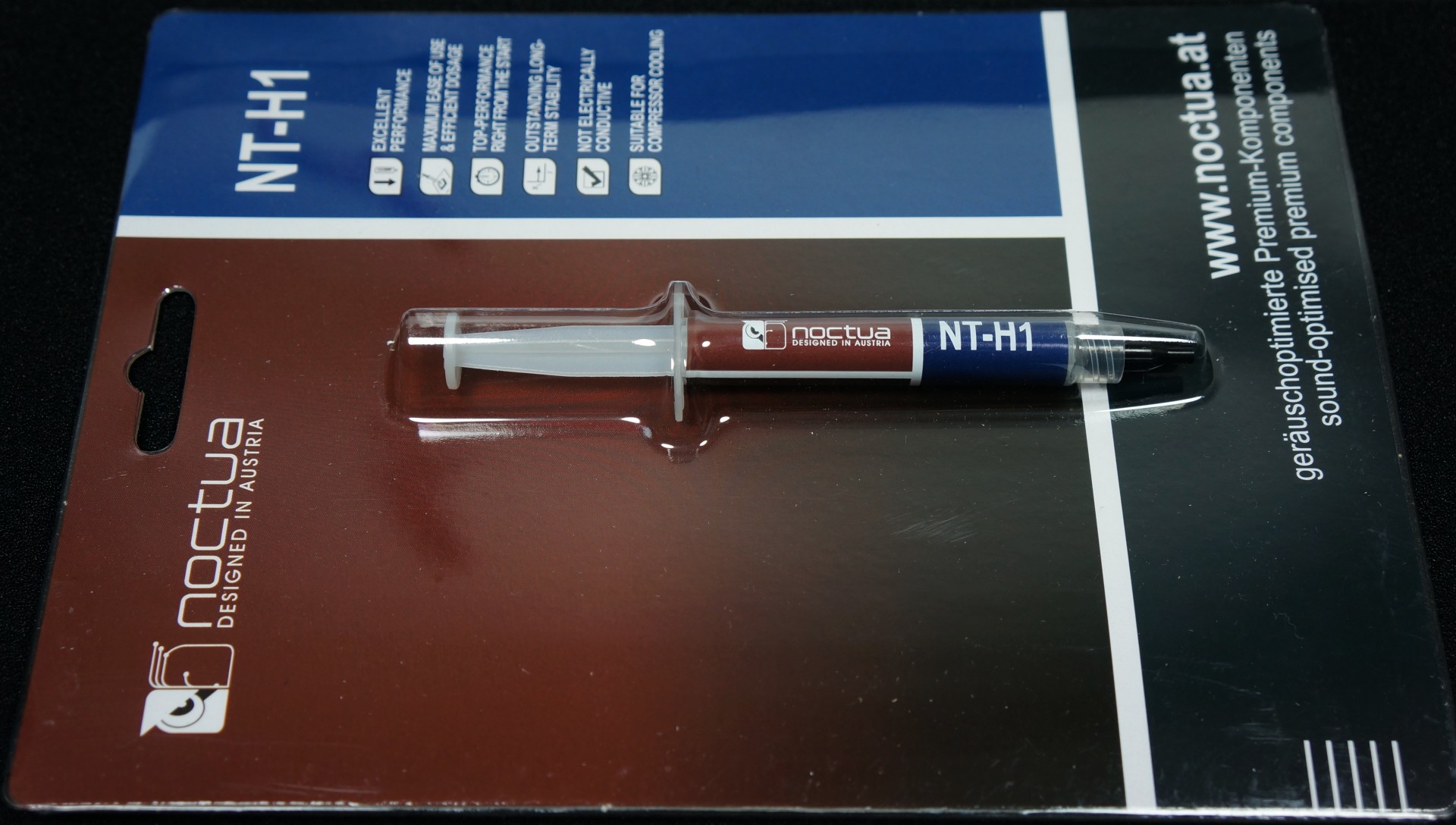Thermal Paste Comparison, Part Two: 39 Products Get Tested
It's time for the numbers. In addition to testing liquid metal compounds and thermally conductive adhesives, each paste is discussed on its own merits before we chart out the results of four usage cases. After all, these products behave differently.
Pastes: Gelid Solutions, Noctua, And Phanteks
Gelid Solutions GC-2
We're going to start with Gelid's most budget-oriented solution. Its thermal results are respectable, landing it in the vicinity of Arctic's MX-2, MX-4, and Arctic Silver 5. But it's also noticeably thicker, making it harder to manipulate at room temperature. Nevertheless, this is a solid product that sells for less than $1/g, making it the price/performance leader.
| Gelid Solutions GC-2 | |
|---|---|
| Thermal Conductivity | 3.8 W/(m*K) |
| CPU Water Cooling, High Pressure | 32.7 ΔT (22 °C ambient) |
| CPU Air Cooling, High Pressure | 36.5 ΔT (22 °C ambient) |
| CPU Air Cooling, Low Pressure | 37.7 ΔT (22 °C ambient) |
| GPU Cooling | 66.5 ΔT (22 °C ambient) |
| Electrically Conductive | No |
| Viscosity | 6 (1-10, lower numbers mean easier to use) |
| Ease of Use | 4 (1-10, higher numbers mean easier to use) |
| Application Hints | The paste can be spread more easily if you warm it to 100-120 degrees Fahrenheit in a pot of water, sealed in a water-tight pouch. |
| Price (approximate) | $6.50 (7 grams) |
Gelid Solutions GC-Extreme
GC-Extreme is the best thermal paste in our round-up, maintaining a slim lead over the runner-up as long as you're using a heat sink with high mounting pressure. If this compound was a little softer, it'd be even more ideal and wouldn't require warming before application. Heating it up a bit does pay off though, and we recommend it for overclockers and enthusiasts. Due to its high viscosity, it's perhaps less ideal for beginners.
| Gelid Solutions GC-Extreme | |
|---|---|
| Thermal Conductivity | 8.5 W/(m*K) |
| CPU Water Cooling, High Pressure | 31.8 ΔT (22 °C ambient) |
| CPU Air Cooling, High Pressure | 35.3 ΔT (22 °C ambient) |
| CPU Air Cooling, Low Pressure | 36.7 ΔT (22 °C ambient) |
| GPU Cooling | 65.0 ΔT (22 °C ambient) |
| Electrically Conductive | No |
| Viscosity | 6 (1-10, lower numbers mean easier to use) |
| Ease of Use | 5 (1-10, higher numbers mean easier to use) |
| Application Hints | The paste can be spread more easily if you warm it to 100-120 degrees Fahrenheit in a pot of water, sealed in a water-tight pouch. |
| Price (approximate) | $11 (3.5 g) |
Noctua NT-H1
This paste is almost a classic by now, and it still gets widely recommended. Rightfully so? Our testing reveals that its price/performance ratio is almost as good as Gelid Solution's GC-2, and its thermal parameters are even better. Noctua's solution ends up in the upper mid-range of our contenders, and a low price makes it hard to pass up unless you're a hardcore overclocker.
| Noctua NT-H1 | |
|---|---|
| Thermal Conductivity | Data not available |
| CPU Water Cooling, High Pressure | 32.2 ΔT (22 °C ambient) |
| CPU Air Cooling, High Pressure | 36.1 ΔT (22 °C ambient) |
| CPU Air Cooling, Low Pressure | 37.1 ΔT (22 °C ambient) |
| GPU Cooling | 68.0 ΔT (22 °C ambient) |
| Electrically Conductive | No |
| Viscosity | 4 (1-10, lower numbers mean easier to use) |
| Ease of Use | 8 (1-10, higher numbers mean easier to use) |
| Application Hints | The paste can be spread more easily if you warm it to 100-120 degrees Fahrenheit in a pot of water, sealed in a water-tight pouch. |
| Price (approximate) | $6 |
Phanteks TH-NDC (Paste Bundled With Phanteks Coolers)
The paste that Phanteks includes with its heat sinks contains nano particles of diamond, approaches the thermal performance of Gelid's GC-Extreme, and can be applied as easily, if not more so. It is somewhat similar to Cooler Master's Extreme Fusion X1, but can be applied even by novices. A big shout-out to Phanteks for bundling TH-NDC with its coolers.
Get Tom's Hardware's best news and in-depth reviews, straight to your inbox.
| Phanteks TH-NDC (Paste Bundled With Phanteks Coolers) | |
|---|---|
| Thermal Conductivity | Data not available |
| CPU Water Cooling, High Pressure | 32.0 ΔT (22 °C ambient) |
| CPU Air Cooling, High Pressure | 35.6 ΔT (22 °C ambient) |
| CPU Air Cooling, Low Pressure | 37.0 ΔT (22 °C ambient) |
| GPU Cooling | 65.5 ΔT (22 °C ambient) |
| Electrically Conductive | No |
| Viscosity | 4 (1-10, lower numbers mean easier to use) |
| Ease of Use | 6 (1-10, higher numbers mean easier to use) |
| Application Hints | The paste can be spread more easily if you warm it to 100-120 degrees Fahrenheit in a pot of water, sealed in a water-tight pouch. |
| Price (approximate) | N/A |
Current page: Pastes: Gelid Solutions, Noctua, And Phanteks
Prev Page Pastes: Cooler Master Next Page Pastes: Prolimatech
Igor Wallossek wrote a wide variety of hardware articles for Tom's Hardware, with a strong focus on technical analysis and in-depth reviews. His contributions have spanned a broad spectrum of PC components, including GPUs, CPUs, workstations, and PC builds. His insightful articles provide readers with detailed knowledge to make informed decisions in the ever-evolving tech landscape
-
dragonfang18 I loved the toothpaste part. What about Vicks Vaporub? I wonder how that thing would do.Reply -
TehDudeMan Great article guys! As a reader for over 10 years pretty much daily, this reminds me of the old Tom's Hardware. These type of in depth articles on enthusiast products are what I love.Reply -
Matt Edwards A great article, agree the application of the compound, not the compound itself is most important.Reply
Like ledpellet I too am curious about these diamond compounds. Wonder if it offers similar results to the Coollaboratory products with an easier application, or if the results simply don't justify the price. E.g in Australia, Innovation Cooling IC7 Diamond 7 Carat Thermal Compound Paste - 1.5G can be found for as much as $25. The cheapest I have managed to find it for is $15. For that price it would want to be good considering the leading GELID GC Extreme, can be found for around $8. -
danwat1234 Coollaboratory Liquid Ultra isn't all that good after a year of hard use. In fact, it completely hardens / dries. On my X9100 after 9 months of nearly 24/7 100% load, I started seeing high temps and after 1 year auto shut downs while crunching. Turns out it was shutting off because it hit the 105 C thermal protection.Reply
Opened it up; thermal compound was as hard as a rock. has to pocket knife blade and sand it down.
So for longevity it sucks. That is something to consider, not just initial performance, but performance months and years down the road. Especially for laptops that aren't designed to be opened up frequently for repasting.
After trying Liquid Ultra many times and having it fail on me, I've put on Arctic MX-2 that has a supposed 8 year durability rating. Initial performance is great, we'll see how it lasts (been 3 weeks so far). -
slomo4sho CLU and Arctic MX-4 are both great products. MX-2 and MX-4 can often be found free after rebate so they are an exceptional value.Reply



